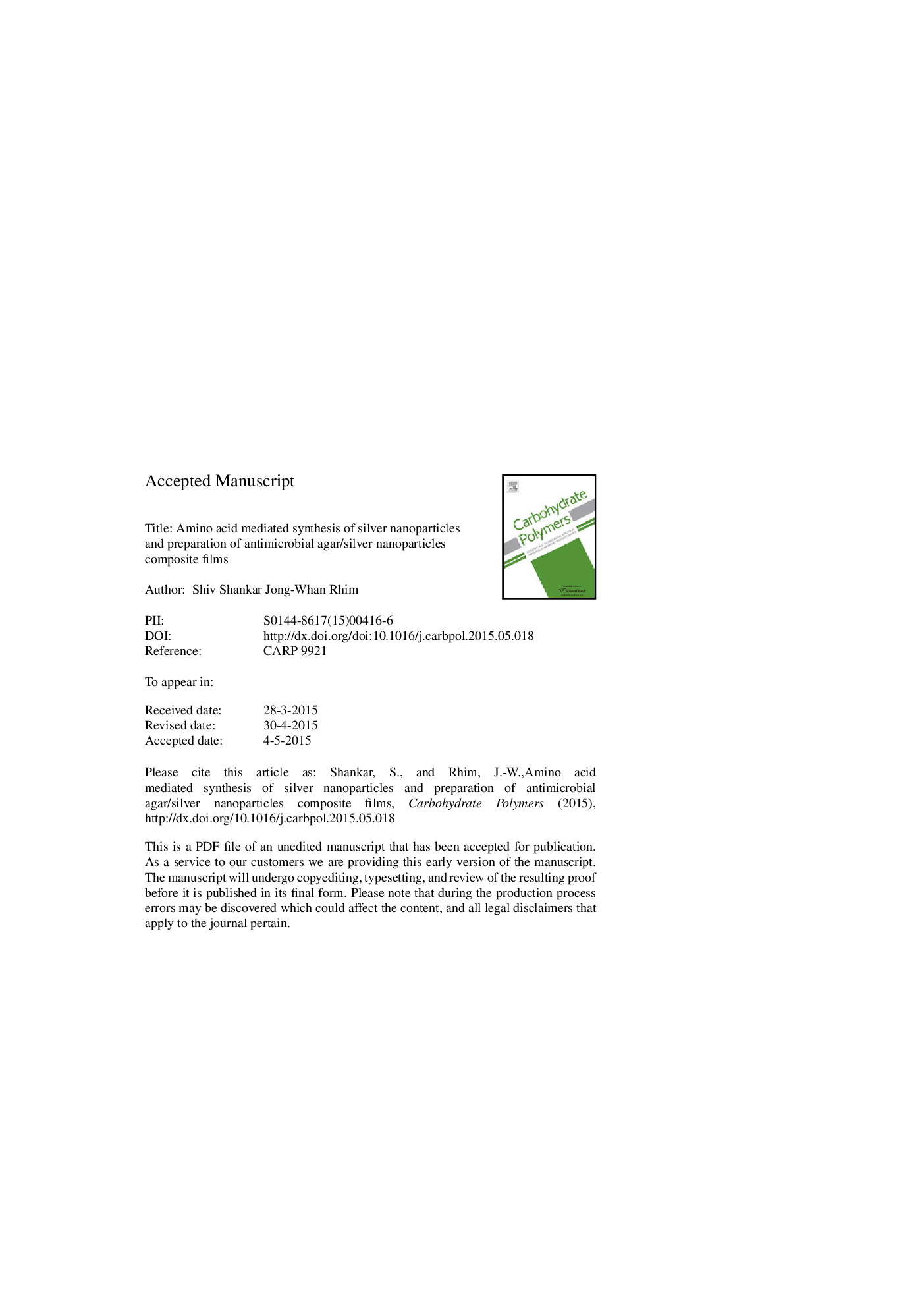| Article ID | Journal | Published Year | Pages | File Type |
|---|---|---|---|---|
| 7788167 | Carbohydrate Polymers | 2015 | 39 Pages |
Abstract
Silver nanoparticles (AgNPs) were synthesized using amino acids (tyrosine and tryptophan) as reducing and capping agents, and they were incorporated into the agar to prepare antimicrobial composite films. The AgNPs solutions exhibited characteristic absorption peak at 420Â nm that showed a red shift to â¼434Â nm after forming composite with agar. XRD data demonstrated the crystalline structure of AgNPs with dominant (1Â 1Â 1) facet. Apparent surface color and transmittance of agar films were greatly influenced by the AgNPs. The incorporation of AgNPs into agar did not exhibit any change in chemical structure, thermal stability, moisture content, and water vapor permeability. The water contact angle, tensile strength, and modulus decreased slightly, but elongation at break increased after AgNPs incorporation. The agar/AgNPs nanocomposite films possessed strong antibacterial activity against Listeria monocytogenes and Escherichia coli. The agar/AgNPs film could be applied to the active food packaging by controlling the food-borne pathogens.
Related Topics
Physical Sciences and Engineering
Chemistry
Organic Chemistry
Authors
Shiv Shankar, Jong-Whan Rhim,
